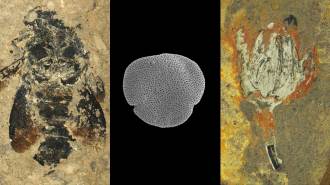In a rare test of paternal behavior in plants, snow buttercup flowers kept from following the sun produced less-viable pollen than unfettered flowers did. Also, in maternal flowers receiving pollen, the grains germinated better if these blooms, too, were free to track the sun, according to Candace Galen of the University of Missouri in Columbia.

Sun tracking turns up in a handful of plant families, mostly among species in cold locales, says Galen. She and Maureen Stanton of the University of California, Davis study snow buttercups (Ranunculus adoneus) that poke flowers up through melting snow in the Colorado Rockies. The researchers left some blooms free and kept others from tracking the sun by slipping a drinking straw around their stems, constraining them in one orientation.
When researchers dabbed pollen from these flowers onto female flower parts, 32 percent more of the pollen from the solar trackers started growing pollen tubes toward the ovaries, compared with pollen from straitjacketed flowers. The boost in pollen power might come from higher temperatures or higher humidity within donor flowers that track the sun, Galen speculates.
In a similar test of maternal behavior, the researchers let insects do the pollen delivery. The team reports that 40 percent more pollen grains germinated in sun trackers than in blooms restrained at random angles. Another test suggested that this difference came not from the delivery of extra pollen, but from the effect of the flowers’ orientation on pollen growth, the researchers say in the May American Journal of Botany.
****************
If you have a comment on this article that you would like considered for publication in Science News, send it to editors@sciencenews.org. Please include your name and location.






